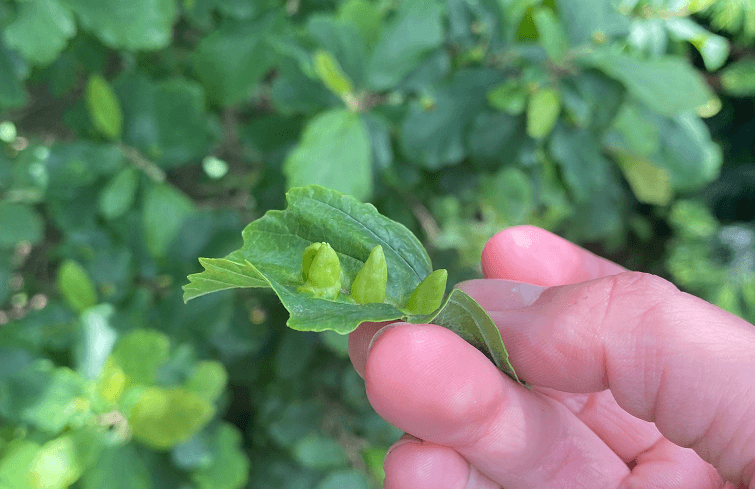This site uses cookies – Learn more.
What’s Growing on the Park’s Witch Hazel Leaves?
What’s Growing on the Park’s Witch Hazel Leaves?

You may have noticed while walking through the park that our witch hazel collection has some interesting growths on its leaves. These are called “witch hazel cone gall,” and they are created by witch hazel aphids (Hormaphis hamamelidis). Female witch hazel aphids crawl onto the witch hazel leaves as they grow and inject them with a substance that causes the cone galls to form around them. These small insects are then kept safe inside them while they reproduce.
In spring, the offspring of the aphids emerge from the galls on the witch hazel leaves and find birch trees to feed on. In the late summer, another generation flies back to the witch hazel and the cycle begins again. Even though witch hazel has strong tannins in its leaves and bark—most commonly used in skincare products—the aphids are not harmed, and the females are able to suck nutrients from the witch hazel while inside the gall.
It is important to understand the life cycles and tendencies of insects in the park. When insects like these witch hazel aphids become visible on the tops of witch hazel leaves, it is natural to become concerned and wonder if they should be removed. However, these aphids have evolved over a long period of time with the witch hazel, and have found a way to live in mutual harmony. These galls do not put our beautiful witch hazels at risk, and therefore we do not interfere with the aphids’ life cycles.



